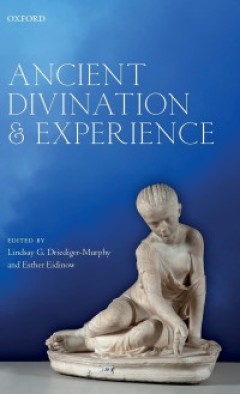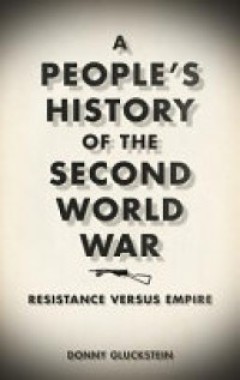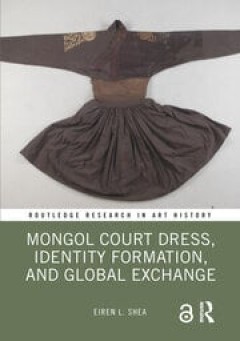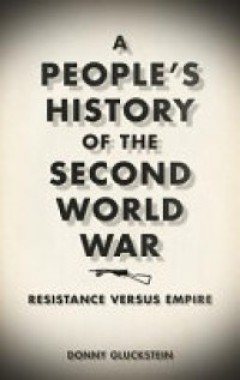Ditapis dengan

ANCIENT DIVINATION AND EXPERIENCE
The introduction to this volume describes the contribution that it makes to scholarship on ancient divinatory practices. It analyses previous and current research, arguing that while this predominantly functionalist work reveals important socio-political dimensions of divination, it also runs the risk of obscuring from view the very people, ideologies, and experiences that scholars seek to unde…
- Edisi
- -
- ISBN/ISSN
- 9780198844549
- Deskripsi Fisik
- ix, 285p.
- Judul Seri
- -
- No. Panggil
- 203.2 ANC a

A PEOPLE'S HISTORY OF THE SECOND WORLD WAR :RESISTANCE VERSUS EMPIRE
A People's History of the Second World War unearths the fascinating history of the war as fought 'from below'. Until now, the vast majority of historical accounts have focussed on the conflict between the Allied and Axis powers for imperialist mastery. Donny Gluckstein shows that in fact between 1939 and 1945 two distinct wars were fought – one ‘from above’ and one ‘from below’. Using…
- Edisi
- -
- ISBN/ISSN
- 9780745328034
- Deskripsi Fisik
- ix, 262p
- Judul Seri
- -
- No. Panggil
- 940.53 DON

MONGOL COURT DRESS, IDENTITY FORMATION, AND GLOBAL EXCHANGE
The Mongol period (1206-1368) marked a major turning point of exchange – culturally, politically, and artistically – across Eurasia. The wide-ranging international exchange that occurred during the Mongol period is most apparent visually through the inclusion of Mongol motifs in textile, paintings, ceramics, and metalwork, among other media. Eiren Shea investigates how a group of newly-conf…
- Edisi
- -
- ISBN/ISSN
- 9781032238432
- Deskripsi Fisik
- xvii,207 p
- Judul Seri
- -
- No. Panggil
- 391.00951 HEA M

FINDING THE LIMITS OF THE LIMES :MODELLING DEMOGRAPHY, ECONOMY AND TRANSPORT …
This open access book demonstrates the application of simulation modelling and network analysis techniques in the field of Roman studies. It summarizes and discusses the results of a 5-year research project carried out by the editors that aimed to apply spatial dynamical modelling to reconstruct and understand the socio-economic development of the Dutch part of the Roman frontier (limes) zone, …
- Edisi
- -
- ISBN/ISSN
- 9783030045760
- Deskripsi Fisik
- -
- Judul Seri
- -
- No. Panggil
- 936.4 ver

A PEOPLE'S HISTORY OF THE SECOND WORLD WAR : RESISTANCE VERSUS EMPIRE
A People's History of the Second World War unearths the fascinating history of the war as fought 'from below'. Until now, the vast majority of historical accounts have focussed on the conflict between the Allied and Axis powers for imperialist mastery. Donny Gluckstein shows that in fact between 1939 and 1945 two distinct wars were fought – one ‘from above’ and one ‘from below’. Using…
- Edisi
- -
- ISBN/ISSN
- 9780745328034
- Deskripsi Fisik
- ix, 262p
- Judul Seri
- -
- No. Panggil
- 940.53 DON p
 Karya Umum
Karya Umum  Filsafat
Filsafat  Agama
Agama  Ilmu-ilmu Sosial
Ilmu-ilmu Sosial  Bahasa
Bahasa  Ilmu-ilmu Murni
Ilmu-ilmu Murni  Ilmu-ilmu Terapan
Ilmu-ilmu Terapan  Kesenian, Hiburan, dan Olahraga
Kesenian, Hiburan, dan Olahraga  Kesusastraan
Kesusastraan  Geografi dan Sejarah
Geografi dan Sejarah